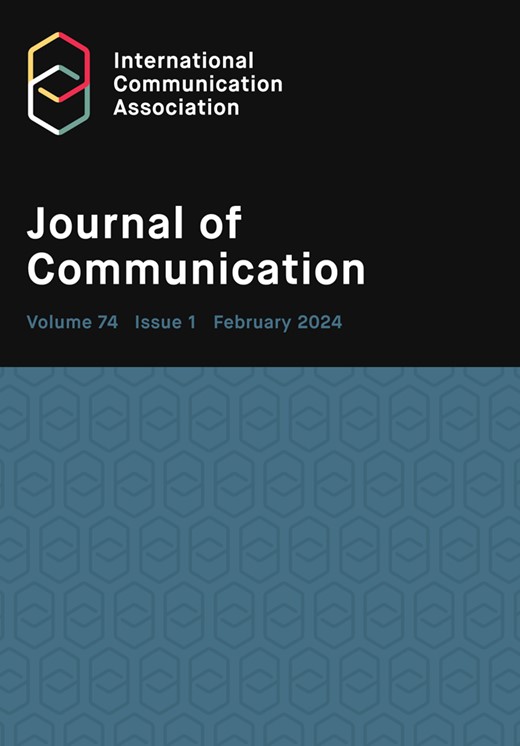Computationally modeling mood management theory: a drift-diffusion model of people’s preferential choice for valence and arousal in media
IF 5.5
1区 文学
Q1 COMMUNICATION
引用次数: 0
Abstract
Mood management theory (MMT) hypothesizes that people select entertainment content to maintain affective homeostasis. However, this hypothesis lacks a formal quantification of each affective attributes’ separate impact on an individual’s media content selection, as well as an integrated cognitive mechanism explaining media selection. Here we present a computational decision-making model that mathematically formalizes this affective media decision-making process. We empirically tested this formalization with the drift-diffusion model using three decision-making experiments. Contrary to MMT, all three studies showed that people prefer negatively valenced and high-arousal media content and that prevailing mood does not shape media selection as predicted by MMT. We also discovered that people are less cautious when choices have larger valence differences. Our results support the proposed mathematical formalization of affective attributes’ influence on media selection, challenge core predictions drawn from MMT, and introduce a new mechanism (response caution) for media selection.情绪管理理论的计算建模:媒介中人们对效价和唤醒的偏好选择的漂移-扩散模型
情绪管理理论(MMT)假设人们选择娱乐内容是为了维持情感的内稳态。然而,这一假设缺乏对每种情感属性对个人媒体内容选择的单独影响的正式量化,也缺乏解释媒体选择的综合认知机制。在这里,我们提出了一个计算决策模型,该模型在数学上形式化了这种情感媒体决策过程。我们通过三个决策实验对漂移-扩散模型的形式化进行了实证检验。与MMT相反,这三项研究都表明人们更喜欢负价值和高唤醒的媒体内容,并且主流情绪并不像MMT预测的那样影响媒体选择。我们还发现,当选择的价差较大时,人们就不那么谨慎了。我们的研究结果支持了情感属性对媒体选择影响的数学形式化,挑战了从MMT中得出的核心预测,并引入了一种新的媒体选择机制(反应谨慎)。
本文章由计算机程序翻译,如有差异,请以英文原文为准。
求助全文
约1分钟内获得全文
求助全文
来源期刊

Journal of Communication
COMMUNICATION-
CiteScore
11.60
自引率
5.10%
发文量
41
期刊介绍:
The Journal of Communication, the flagship journal of the International Communication Association, is a vital publication for communication specialists and policymakers alike. Focusing on communication research, practice, policy, and theory, it delivers the latest and most significant findings in communication studies. The journal also includes an extensive book review section and symposia of selected studies on current issues. JoC publishes top-quality scholarship on all aspects of communication, with a particular interest in research that transcends disciplinary and sub-field boundaries.
 求助内容:
求助内容: 应助结果提醒方式:
应助结果提醒方式:


